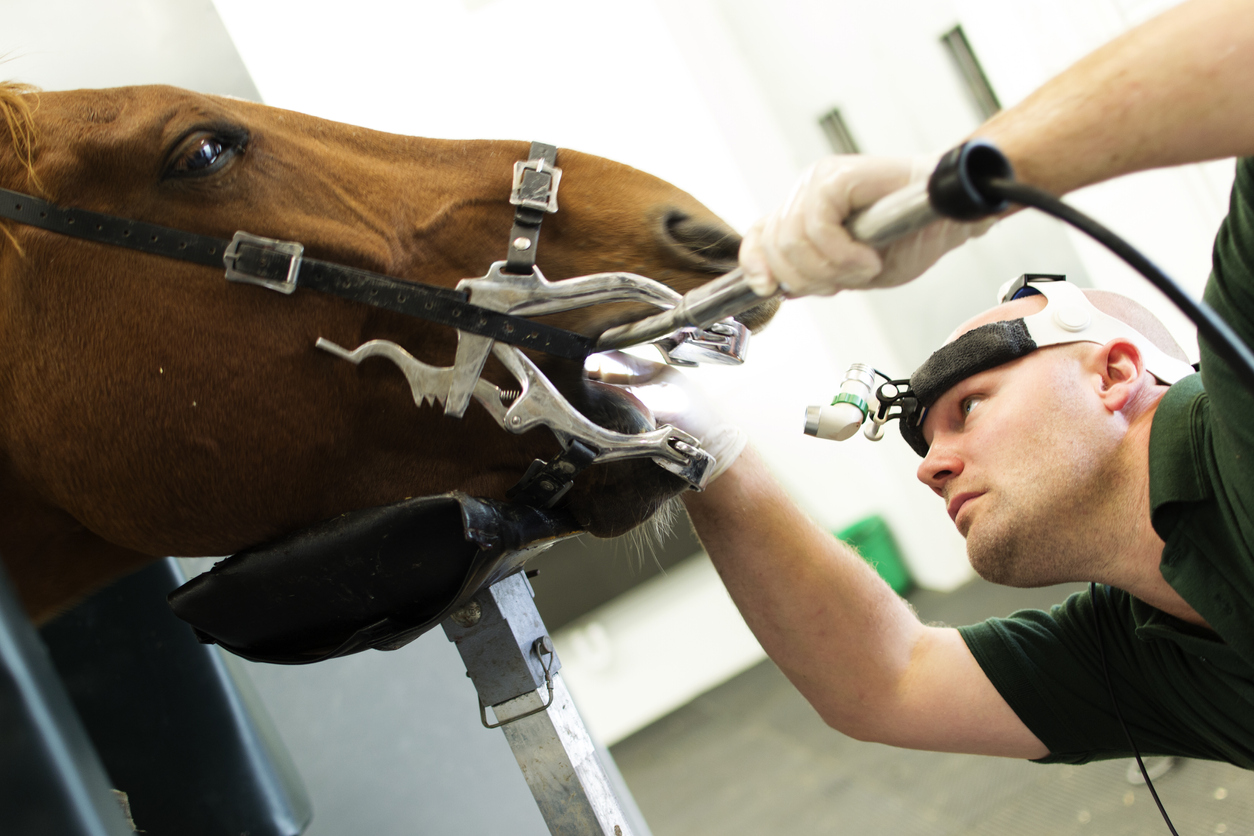Top tips for Horse dental care
- 23 Feb 2022
- 0 Comments

Did you know that one of the more well-known signs of ageing in your horse is teeth issues?
This can consist of lost or worn teeth, diastemas (gaps between the teeth), inflamed gums, fractured teeth, sharp enamel points and even arthritis of the jaw. Just like when we have dental problems, your horse will have some discomfort when eating, difficulty chewing can lead to weight loss and a number of digestive upsets and although more common in senior horses, can occur in younger horses too.
Is your horse due a check-up?
Regardless of your horse’s age, it is a good idea to have your horse’s teeth checked regularly and follow proper dental care and make sure you can check teeth and spot the signs of a potential problem. Speak to your vet or equine dentist to arrange a dental exam and to discuss routine dental care.
In-between visits, lookout for signs of pain or difficult chewing including:
- Weight loss
- Sharp points in teeth
- Quidding
- Digestive issues such as colic, choke, loose droppings
- Reluctance or refusal to eat
- Bad breath
- Obvious pain or discomfort when eating or always chewing on one side
- Facial swellings
- Long fibre, whole cereal grains or partially/ undigested feed in droppings
- Reluctance to accept the bit and/ or changes in ridden behaviour
How to care for your horses’ sensitive teeth
Imagine you have sensitive teeth and then drinking a glass of ice-cold water, a horse will feel a similar way. A reluctance to drink can lead to dehydration and colic, to avoid this happening we recommend adding hot water to buckets taking the chill off and using warm water to soak cubes and mashes. Older horses are more susceptible to sensitive teeth.


Feed management for Horses with sensitive teeth
How to choose a hay or forage replacer
Forage replacers are essential for horses no longer able to manage long fibre (hay and haylage) or grazing but with a variety of cubes, chaffs/ short chopped fibres and mashes to choose from, it can be difficult to know where to start. The most suitable option(s) will depend on several factors including your horse’s energy (calorie) requirements, chewing ability, history of clinical conditions such as laminitis and what he finds palatable.
- For those who can manage them, soft, short chopped fibres are the ideal way to increase chewing, helping to support gastric health and mental well-being. However, horses and ponies with very poor teeth will need 100% of their diet replaced with a mash.
- Avoid grass-based products for laminitics as they may be high in water-soluble carbohydrates (WSC)
- All feeds for laminitics should be low in starch and sugar
- Check whether your chosen hay replacer(s) contain added vitamins and minerals – a nutritionist can offer advice on how to provide a balanced diet without over-supplying vitamins and minerals
- Some feeds such as SPILLERS HAPPY HOOF, SPILLERS High Fibre Cubes, SPILLERS Speedy-Mash Fibre and SPILLERS Senior Super-Mash are suitable for feeding as a complete replacement for hay or grazing, whilst others such as alfalfa and unmolassed sugar beet are only suitable for feeding as partial hay replacers
How to feed a hay replacer
Hay replacers should be divided into a minimum of 4 meals for horses without access to grazing to avoid long periods without fibre and for those who can manage it, chewing. Some horses will learn to regulate their intake but small frequent meals and dividing rations between multiple buckets may help to encourage ‘grazing’. Those who turnout may also need to be separated from their companions at mealtimes to prevent ‘sharing’ or bullying.
How to prepare soaked feeds
Most cubes or pellets can be soaked to make a mash but quick-soaking feeds such as SPILLERS Senior-Super Mash may be a more convenient option. Regardless of the feed you choose, remember to weigh it before soaking – the increase in volume after soaking can make it easy to overestimate how much you are feeding! Although the summer sun may seem like a distant memory, soaked feeds can start to ferment in hot weather so it’s also important they are kept as cool as possible and fed immediately after soaking.







